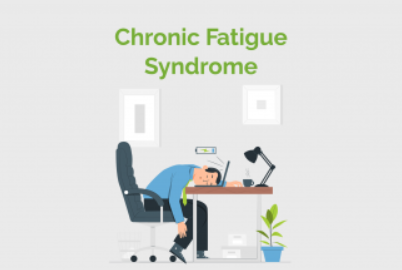Women and people with lower incomes are among those more likely to suffer from a debilitating illness that’s gained attention since the COVID-19 pandemic, Survey data shows of chronic fatigue syndrome
According to recent research, the prevalence of what is commonly known as chronic fatigue syndrome among adult Americans is estimated to be around 1%. Individuals who are more likely to suffer from this crippling ailment include women, those living in more rural areas, and those with lower incomes.
According to the Centers for Disease Control and Prevention, myalgic encephalomyelitis/chronic fatigue syndrome, or ME/CFS, can make it difficult for a person to perform daily tasks and is characterized by extreme exhaustion that does not go away with rest. Exertion may exacerbate the illness, and other symptoms such as dizziness and difficulty concentrating may occur. The precise cause of the disorder is still unknown, although symptoms may be preceded by an infection or other event.
Also read-JN.1 Coronavirus Variant Discovered: How Concerned Ought You To Be

Reports on chronic fatigue syndrome
In the U.S. overall, an estimated 1.3% of adults had ME/CFS in 2021-2022, according to an analysis released Friday by the CDC’s National Center for Health Statistics. The study, based on survey respondents’ answers to whether they’d ever been diagnosed with myalgic encephalomyelitis or chronic fatigue syndrome and whether they still had such a condition when interviewed, found a greater percentage of ME/CFS cases among women, at 1.7% compared with 0.9% of men.

The study found ME/CFS was most common in adults between the ages of 50 and 59, as well as those 60 to 69 years old, with rates of 2% and 2.1%, respectively. Less than 1% of adults between 18 and 39 years old had ME/CFS, along with 1.4% of those 70 and older.

Reports in the metropolis
Among racial and ethnic groups, 1.5% of white adults had ME/CFS, according to the study, along with 1.2% of black individuals, 0.8% of Hispanics and 0.7% of Asians. The study additionally found that the likelihood of having ME/CFS decreased as the level of reported family income increased. The prevalence of ME/CFS among adults with family incomes at or above 200% of the federal poverty level was 1.1%, with the rate rising to 1.7% among those with incomes between 100% and 199% of the FPL. Adults with family incomes under 100% of the federal poverty level had the highest percentage of ME/CFS cases at 2%. Greater shares of ME/CFS cases were also found as communities grew more rural. For example, 1.9% of adults in nonmetropolitan areas had ME/CFS compared with 1% of adults in large central metropolitan areas. The CDC estimates that 3.3 million adults with ME/CFS, or 1.3% of the total, are affected. However, experts have stated that the vast majority of ME/CFS cases are not diagnosed, and there is currently no conclusive lab test to do so, so the true prevalence may be higher.

Symptoms
Many ME/CFS patients worry that their symptoms won’t be taken seriously by medical professionals. In addition, the fact that long-term COVID symptoms can sometimes be confused with those of ME/CFS has drawn attention to the illness in recent years, raising hopes for additional study and understanding of it.

According to Yale University immunobiology professor Akiko Iwasaki, who has been funded to look for a biomarker for ME/CFS and studies long COVID, up to half of those with long COVID will develop ME/CFS (Iwasaki, 2010).
Also read-In The US, Salmonella-Tainted Cantaloupe Has Killed Four People, And There Are Over 300 Known Cases
images source: Google
Disclaimer: The opinions and suggestions expressed in this article are solely those of the individual analysts. These are not the opinions of HNN. For more, please consult with your doctor




































